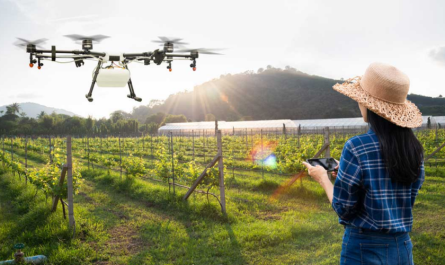Wearable technology has come a long way since the introduction of fitness trackers and smartwatches. In 2024, these devices are more advanced, versatile, and integrated into our daily lives than ever before. From health monitoring to fitness tracking and beyond, wearable tech is revolutionising how we interact with technology and manage our well-being. Let’s explore the latest advancements in wearable tech and how they’re shaping our future.
The Evolution of Wearable Tech
Wearable technology has evolved to become an essential part of our daily routines. Initially focused on basic fitness tracking, these devices now offer a wide range of features that cater to various aspects of health and lifestyle.
Health Monitoring
One of the most significant advancements in wearable tech is its ability to monitor health metrics in real-time. Devices now come equipped with sensors that can track heart rate, blood oxygen levels, sleep patterns, and even detect irregular heartbeats. This continuous monitoring provides users with valuable insights into their health and can alert them to potential issues before they become serious.
Personalised Health Insights
Wearable devices use AI and machine learning to analyse collected data, offering personalised health insights. This technology can suggest lifestyle changes, recommend exercises, and even predict potential health risks based on historical data.
Fitness Tracking
Fitness tracking remains a core feature of wearable technology. In 2024, these devices offer more than just step counting. They can track a variety of activities, from swimming to yoga, and provide detailed metrics on performance, calories burned, and progress over time.
Enhanced Motivation and Challenges
Many wearables now include social features that allow users to connect with friends, join challenges, and share achievements. This social aspect enhances motivation and encourages users to stay active and reach their fitness goals.
Beyond Health and Fitness
While health and fitness remain central to wearable tech, these devices are expanding into new territories, offering features that enhance daily life and productivity.
Smart Clothing and Accessories
Smart clothing is becoming increasingly popular, with garments that can monitor body temperature, posture, and even muscle activity. These innovations are particularly beneficial for athletes and individuals undergoing physical therapy, providing real-time feedback and insights.
Fashion Meets Function
Wearable tech is also making strides in the fashion industry. Brands are designing stylish accessories that incorporate technology, such as rings and bracelets that can track health metrics discreetly. This fusion of fashion and function makes wearable tech more appealing and accessible to a broader audience.
Workplace Productivity
Wearable technology is also transforming the workplace. Devices like smart glasses can enhance productivity by providing hands-free access to information and tools. These wearables are particularly useful in fields like manufacturing, healthcare, and logistics, where quick access to data can improve efficiency and safety.
Health and Safety in the Workplace
Wearables can monitor workers’ health and safety by tracking vital signs and environmental conditions. For example, in hazardous environments, wearables can alert workers to potential dangers, helping prevent accidents and ensuring a safer workplace.
Challenges and Considerations
Despite the many benefits, wearable technology faces several challenges that need to be addressed to ensure its continued growth and acceptance.
Privacy and Security
With the vast amount of personal data collected by wearables, privacy and security are significant concerns. Manufacturers must prioritise data protection, ensuring that user information is encrypted and secure from potential breaches.
Ethical Use of Data
The ethical use of data is another consideration. Companies must be transparent about how they use collected data and ensure that users have control over their information. This transparency builds trust and encourages more widespread adoption of wearable tech.
Battery Life and Durability
Battery life remains a challenge for many wearable devices. Users expect their wearables to last throughout the day without frequent recharging. Improving battery efficiency and developing more durable materials are key areas of focus for manufacturers.
Environmental Impact
As wearable technology becomes more widespread, its environmental impact must be considered. Companies are exploring sustainable materials and recycling programmes to minimise waste and reduce the environmental footprint of these devices.
The Future of Wearable Tech
The future of wearable technology looks promising, with continuous advancements and innovations on the horizon.
Integration with IoT
Wearable tech is becoming increasingly integrated with the Internet of Things (IoT), creating a more connected and seamless experience. This integration allows wearables to communicate with other smart devices, such as home automation systems and personal assistants, enhancing convenience and functionality.
AI and Machine Learning
AI and machine learning are playing a crucial role in the evolution of wearable tech. These technologies enable devices to learn from user behaviour, offering more personalised and adaptive experiences. As AI continues to advance, wearables will become even more intuitive and capable of anticipating user needs.
Expanding Applications
The applications of wearable tech are expanding beyond health and fitness. In the future, we can expect to see wearables used in areas such as education, entertainment, and even mental health support. These devices will offer new ways to engage with technology and improve quality of life.
Conclusion
Wearable technology in 2024 is more than just a trend; it’s a transformative force that is reshaping how we live, work, and interact with the world. From health monitoring and fitness tracking to enhancing productivity and safety, wearables offer a wide range of benefits that cater to diverse needs.
As technology continues to advance, the potential of wearable tech is limitless. By addressing challenges such as privacy, security, and sustainability, manufacturers can ensure that these devices remain a valuable and trusted part of our lives.
The future of wearable technology is bright, promising innovations that will continue to enhance our daily experiences and improve our overall well-being.







